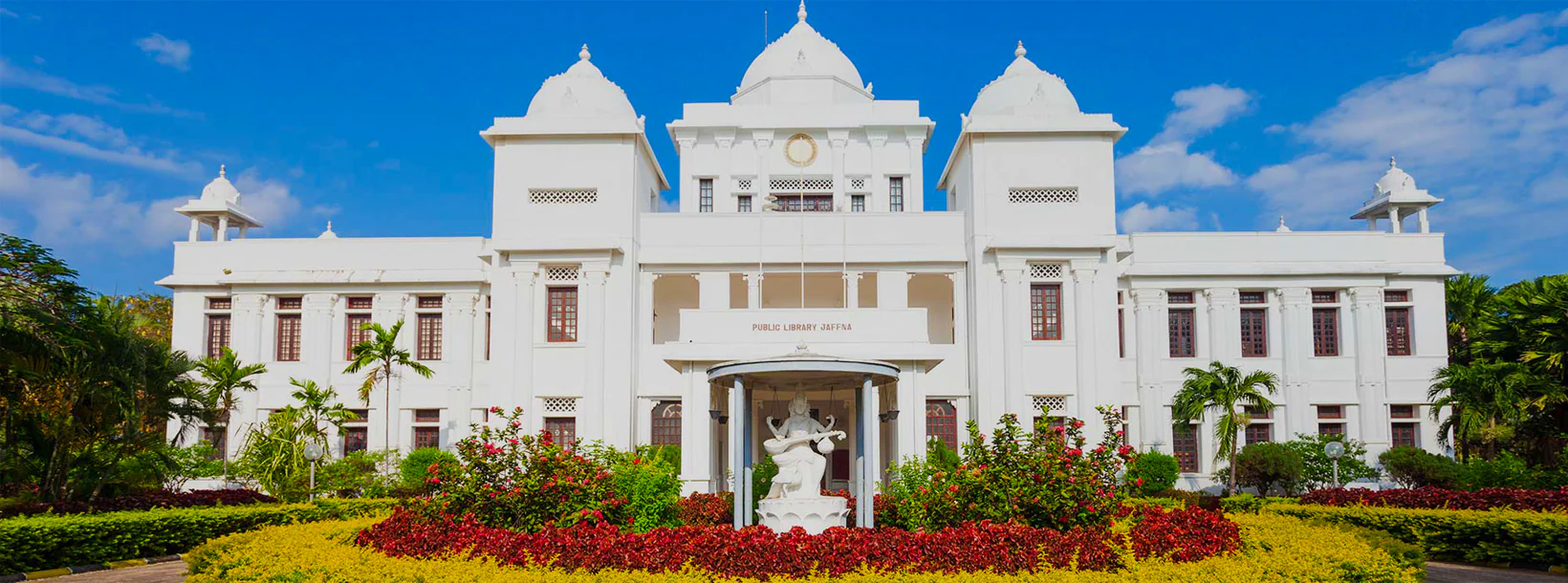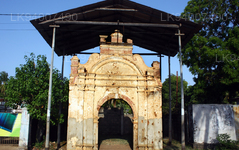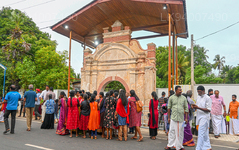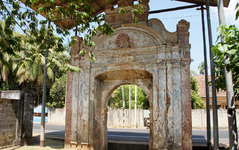
Jaffna City
Jaffna is the main city of Jaffna peninsula in the northernmost district of Sri Lanka. Comfortable intercity busses from Colombo take 10-12 hours to reach the city of Jaffna.
Sankili Thoppu
Sankili Thoppu, auch bekannt als Sankiliyan Thoppu, ist eine historische Stätte in Jaffna, Sri Lanka. Es wird mit dem Herrscher Sankili II. aus dem 16. Jahrhundert in Verbindung gebracht, der der letzte tamilische König des Königreichs Jaffna war. Sankili Thoppu ist bekannt für seine historische Bedeutung und seine Verbindung zu den Ereignissen, die sich während der Herrschaft von Sankili II. abspielten. Sankili II., auch bekannt als Cankili II., regierte von 1617 bis 1619 das Königreich Jaffna. Seine Herrschaft war geprägt von Konflikten mit den Portugiesen, die ihren Einfluss in der Region ausweiteten. Die Portugiesen beschuldigten Sankili II. der Piraterie und starteten Militärkampagnen gegen ihn. Diese Konflikte führten schließlich zum Sturz von Sankili II und dem Ende des unabhängigen Königreichs Jaffna. Sankili Thoppu wird oft mit der letzten Schlacht in Verbindung gebracht, in der Sankili II. von den portugiesischen Streitkräften besiegt wurde. Es wird angenommen, dass sich an diesem Ort der Palast oder die Festung von Sankili II. befand, wo die Schlacht stattfand. Heute ist es eine von Touristen besuchte historische Stätte und erinnert an die historischen Ereignisse, die die Region geprägt haben. Bitte beachten Sie, dass historische Details und Interpretationen von Ereignissen variieren können. Es ist daher ratsam, lokale historische Quellen oder Experten zu konsultieren, um detailliertere Informationen über Sankili Thoppu und seine historische Bedeutung zu erhalten.
About Jaffna District
Jaffna is the capital city of the Northern Province, Sri Lanka. 85% of the populations of the Jaffna and Kilinochchi districts are Hindus. The Hindus follow the Saivite tradition. The remainders are largely Roman Catholics or Protestants, some of whom are descendants of colonial settlers, known as Burghers. The Tamils are divided along caste lines, with the farmer-caste Vellalar forming the majority. Sea products, red onion, and tobacco are the main products in Jaffna.
Jaffna is home to beautiful Hindu temples. An Old Dutch Fort still stands well preserved within which is an old Church. Another example of Dutch architecture is the King's House. No visit to Jaffna is complete without tasting the exquisite Jaffna mango, reputed for its sweetness. About 3 km away is the majestic Nallur Kandaswamy Temple, home to the largest religious festival in Jaffna. The Kayts Harbour is an ancient ship docking site in the Jaffna region.
About Northern Province
The Northern Province is one of the 9 provinces of Sri Lanka. The provinces have existed since the 19th century but they didn't have any legal status until 1987 when the 13th Amendment to the 1978 Constitution of Sri Lanka established provincial councils. Between 1988 and 2006 the province was temporarily merged with the Eastern Province to form the North-East Province. The capital of the province is Jaffna.
Northern Province is located in the north of Sri Lanka and is just 22 miles (35 km) from India. The province is surrounded by the Gulf of Mannar and Palk Bay to the west, Palk Strait to the north, the Bay of Bengal to the east and the Eastern, North Central and North Western provinces to the south.The province has a number of lagoons, the largest being Jaffna Lagoon, Nanthi Kadal, Chundikkulam Lagoon, Vadamarachchi Lagoon, Uppu Aru Lagoon, Kokkilai lagoon, Nai Aru Lagoon and Chalai Lagoon.Most of the islands around Sri Lanka are to be found to the west of the Northern Province. The largest islands are: Kayts, Neduntivu, Karaitivu, Pungudutivu and Mandativu.
The Northern Province's population was 1,311,776 in 2007. The majority of the populations are Sri Lankan Tamils, with a minority Sri Lankan Moor and Sinhalese population. Sri Lankan Tamil is the major language spoken in the province by the vast majority of the population. The other language spoken is Sinhala by 1 percent of the population. English is widely spoken and understood in the cities.

















